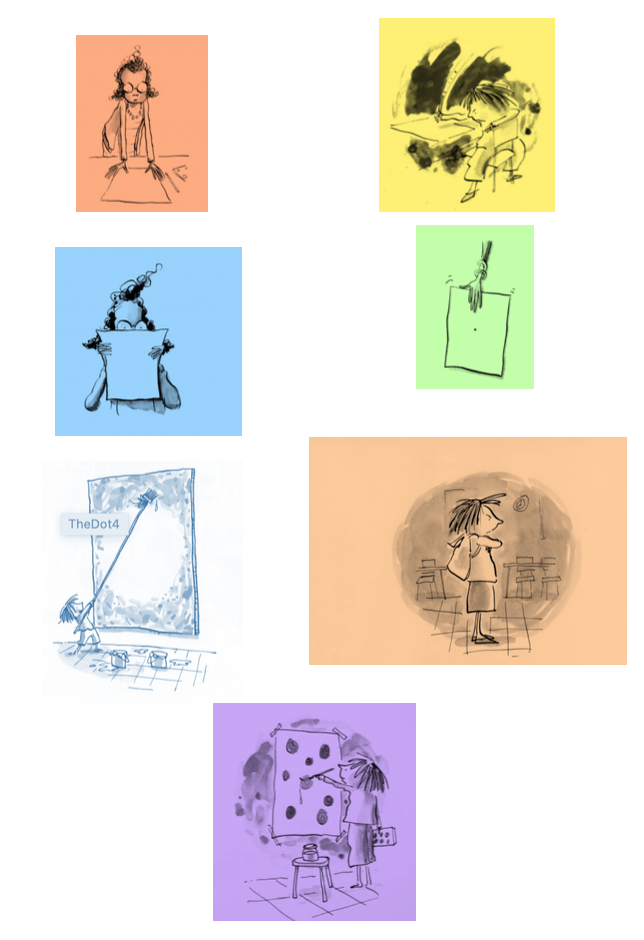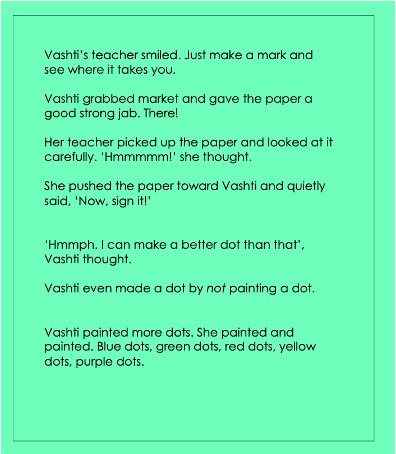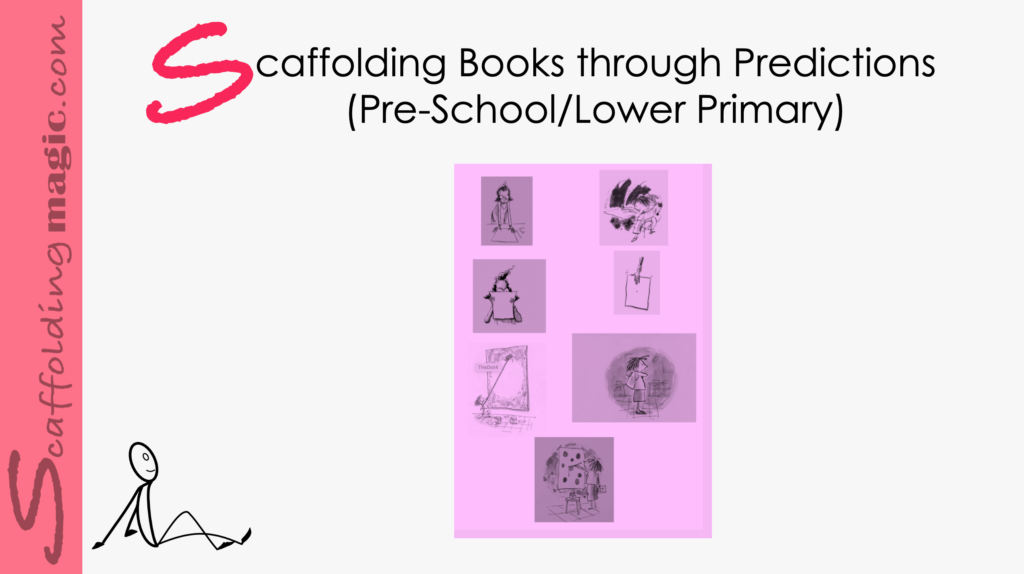You caught a beauty!!!
Download PDF of scaffold here.
theory behind scaffold…
Introducing books in any class can seem daunting, especially when we know the attention span (or rather lack thereof) of our students. Giving our students the chance to interact, make predictions, use critical thinking skills and visual clues, can augment their enthusiasm for reading from the outset. Combining this scaffold with a task-based (communicative) approach will help students interact with the book in dynamic, relevant and meaningful ways.
Neurologically speaking, predicting – directing thoughts to an unknown outcome – has direct and expansive influences on cognitive functions, including*:
- perception
- decision making
- mind, motor and perceptual processing
The act of predicting leads the student to a faster recognition of facts later on, and so the ability to more quickly react, process and assimilate information. With regard to predetermining the possible meanings of visual cues (images), there are modulations in the brain when it is stimulated by imagery that is unique. When those images are later clarified, the brain is able to confront the information heuristically**, and so more efficiently.
This scaffold was created for a teacher who suffered from his traditional training. Though very willing to introduce dynamic activities for his students, he was taught to use the teacher-centred model in his classroom. For this reason, when a visitor entered his classroom, all the students were probably sitting at individual desks, heads down, trying their best to understand the pages of a book they are expected to read and react to on their own, and silently. If you were to ask one of the students what the pages were about, though they may have looked completely immersed in their reading beforehand, they would have had to admit that they have very little understanding either of the text or the overall concept of the book.
Here is how this very eager and well-intentioned teacher made just a few modifications to help his students to understand and appreciate the books he has assigned. It will work for you as well!
The examples given here are from the graphic story The Dot by Peter H. Reynolds. Behind this ostensibly simple illustrated story is a powerful lesson in self-expression, compassion, hidden talents, high expectations, believing in a person’s best version of her/himself, and possibilities.
* https://www.ncbi.nlm.nih.gov/pmc/articles/PMC2904053/
** A heuristic is a mental shortcut that allows people to solve problems and make judgments quickly and efficiently.
step by step…
- Copy and paste all or the principal images from the book, video, or song that you are about to begin, into a PPT. (Example on the right…images from Peter H. Reynold’s heart-opening book The Dot). You can use this template.
- Or, show the video without sound. (Less time in front of a screen is better, but it’s an option if you don’t have other video time that day.)


3. Have the corresponding sentences from the book available to you so you can read them aloud. (Example on the left and see template.)
- Make a large set of these images for each pair or group of students as well for later use.
- Ask students to look at the image, whisper to their partners anything they think about it, and one of the students from each pair verbalises what they’ve agreed to say (colours, clothes, emotions, action, etc.)
- Next, show two or three of images together and ask student which probably comes first in the story. Make sure they understand that there is no one correct answer, just anything they can explain clearly.
- Ask them to predict what the story, video, song might be about. They again have a whispered conversation with their partner and one of the students in each pair has the opportunity to share their conclusions. If possible, encourage them to mention anything that was said before. This will encourage them to listen to their classmates and feel heard as well.
- Next, once more, show one image at a time, and this time read two or three of the sentences you’ve prepared. Ask students which sentence most likely corresponds to the image you’re showing. You can do this part as a whole class.
- Give pairs/groups of students the set of images you’ve printed out.
- They stand up and put the images in the order they think is appropriate.
- Other groups agree or disagree, always using the Four Rules of Respectful Feedback.
Example:
- Student 1: The picture with the girl on the desk goes first.
- Student 2: The picture with the girl drawing goes second.
- Student 3: The picture with the girl and the red dot goes third.
(Yes, we know that this seems very sophisticated for your L2 speakers, but we can always have high expectations and it’s never too early to learn connecting words (‘but’, ‘however’, ‘though’!!!)
- Formative assessment: Show images from other parts in the book that you didn’t include in the activity. Students negotiate (whisper to each other) if these images might confirm or contradict their conclusions about the plot of the story they’ve imagined.
- Reflection: Students draw an illustration of some part of the book, song, video they believe they’ll see, or the best part they have already seen.
- Extension: See a video of the book here.



Scaffoldingmagic.com is your entryway into DYNAMIC bilingual learning methodologies, such as Phenomenon-Based Learning, CLIL, EMI, and ESL. You’ll find ways to implement critical thinking tools (DOK) to promote higher level thinking, the growth mindset, instill an ethic of excellence, deep reflection on learning, and all through multi-cultural, interdisciplinary activities. We have the keys to turning competences into action and to creating collective efficacy in your school so you move ahead as a unified, enthusiastic team.



